Radeon RX 5600 XT Specifications
Importantly, let’s talk first about where the Radeon RX 5600 XT comes from. The Radeon RX 5600 XT is closely related to the Radeon RX 5700 and stands closer to it than it does the Radeon RX 5500 XT. The Radeon RX 5500 XT and Radeon RX 5600 XT are far removed from each other. The Radeon RX 5600 XT shares the same GPU as the Radeon RX 5700, just tweaked downwards in performance and on a different PCB and memory subsystem with a lower TDP.
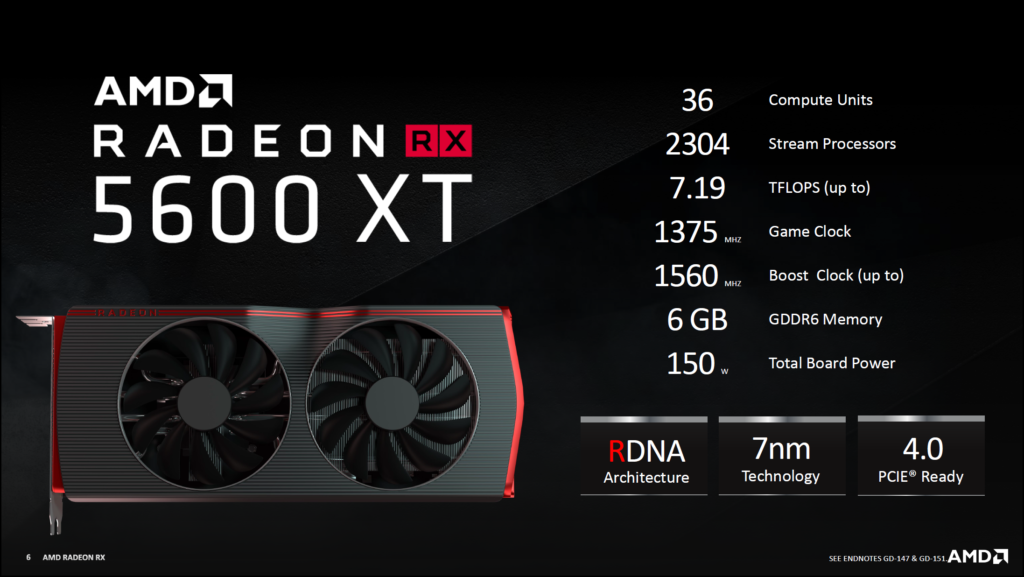
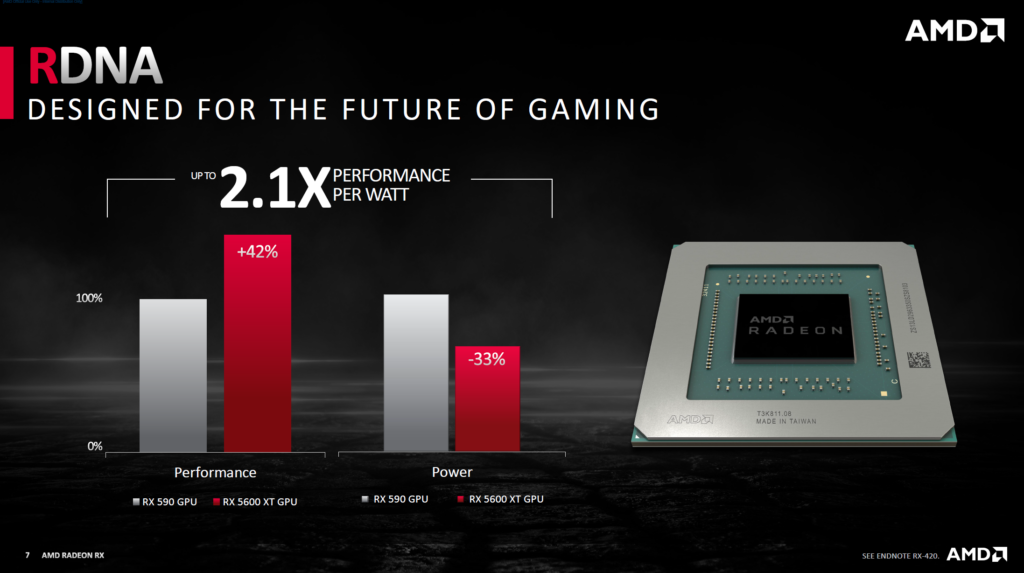


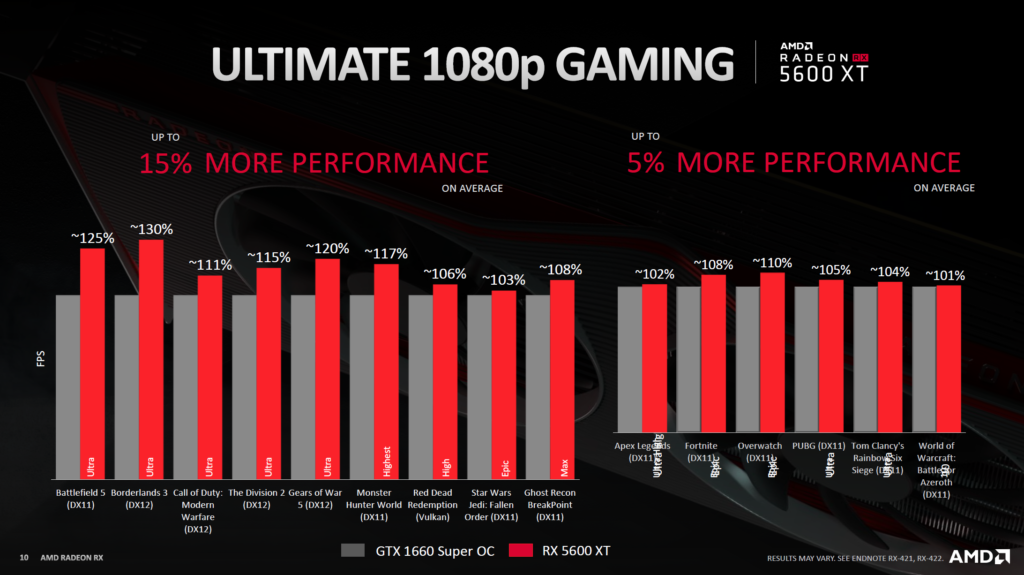
The Radeon RX 5600 XT is based on AMD’s new RDNA architecture, the same as the Radeon RX 5500 XT and Radeon RX 5700 and all 5000 series. It is also a “Navi” GPU, specifically Navi 10, the same as the Radeon RX 5700. It is based on AMD’s 7nm manufacturing process so it shares all the benefits of the Radeon RX 5000 series in terms of what 7nm delivers for power savings and performance per watt.
The Radeon RX 5600 XT’s die size is 251mm1 with 10.3 Billion transistors, this matches the same die size and transistor count as the Radeon RX 5700. The Radeon RX 5600 XT has 36 Compute Units, 2304 Stream Processors, 144 TMUs and 64 ROPs, exactly like the Radeon RX 5700.
What’s Different
The GPU frequency is where the two video cards start to diverge. The Radeon RX 5600 XT has a gaming frequency of 1375MHz and a peak frequency of 1560MHz. In comparison, a Radeon RX 5700 has a gaming frequency of 1625MHz and a peak frequency of 1725MHz. That is quite a bit of distance in the clock speed so that alone changes the fillrate pixels per/second and overall TFLOPs.
The other factor, and more of a major divergence, is the memory subsystem between the two. The Radeon RX 5600 XT has 6GB of GDDR6 on a 192-bit memory bus at 12GHz. This gives it 288GB/sec of memory bandwidth. In comparison, the Radeon RX 5700 has 8GB of GDDR6 on a 256-bit memory bus at 14GHz giving it 448GB/sec of memory bandwidth. That’s a 35% reduction in memory bandwidth for the Radeon RX 5600 XT versus Radeon RX 5700 due to that smaller bus width. That will change the performance, and also reduce the cost for manufacturers with the narrower bus.
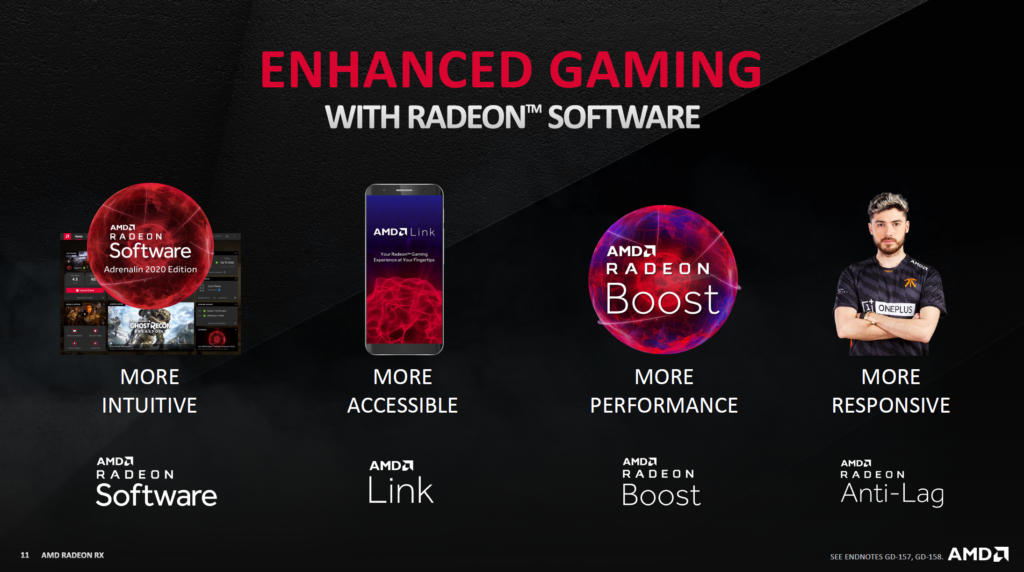
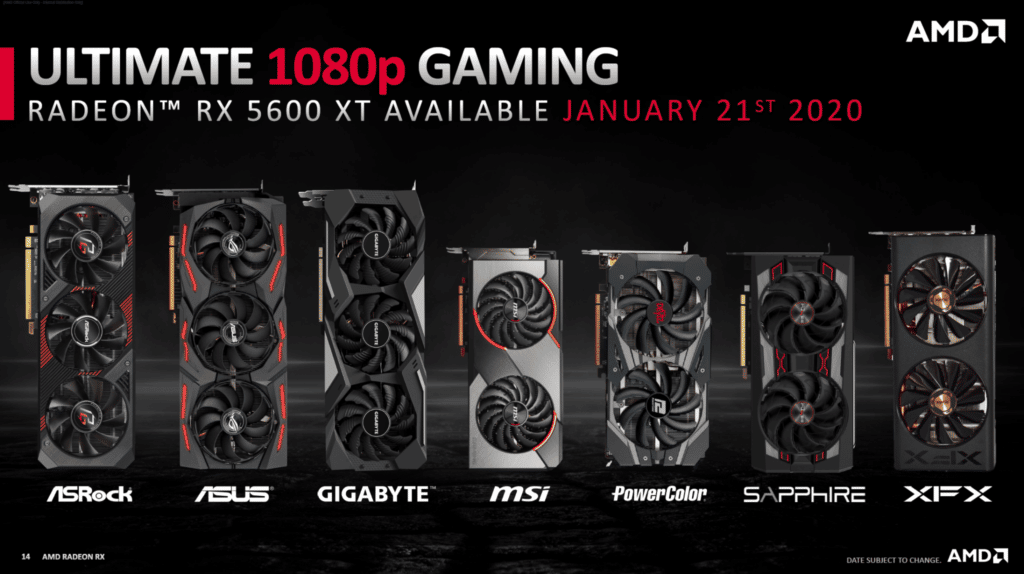

Overall this brings the total board power of the Radeon RX 5600 XT to 150W versus 180W on the Radeon RX 5700. Manufacturers will have custom video cards with custom coolers and factory overclocks on the Radeon RX 5600 XT. That means there will be varying sizes of this video card, and various levels of performance depending on the factory overclock. Since this is based on the Radeon RX 5700 GPU, we are looking forward to a high overclocking ability. We will test overclocking in a separate standalone review after this launch review.
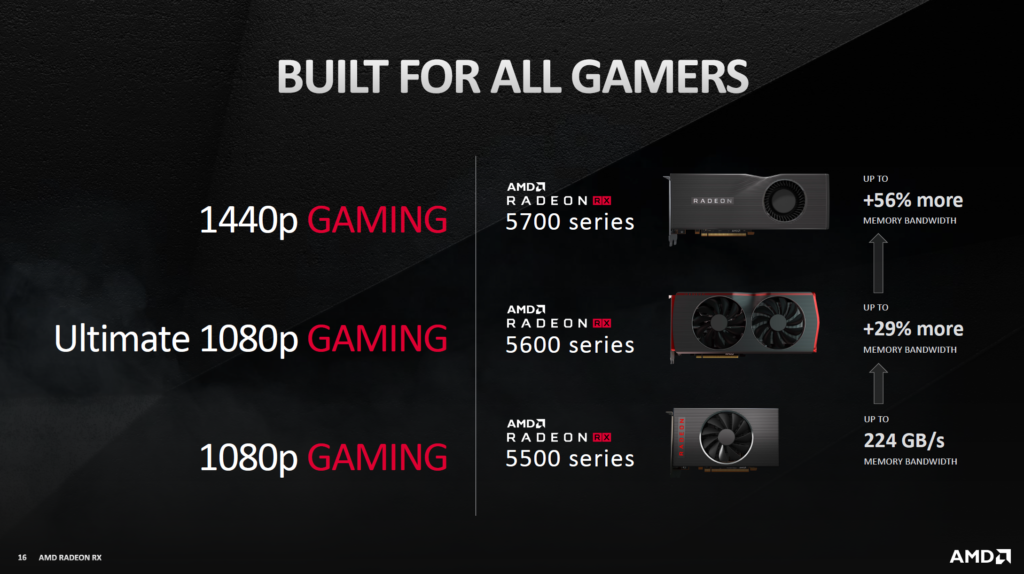

AMD now has a complete product lineup for 1440p and 1080p gaming. The Radeon RX 5700 and RX 5700 XT provide the best 1440p gaming experience. The Radeon RX 5600 XT provides the ultimate 1080p experience. The Radeon RX 5500 XT provides an entry-level 1080p gaming experience.

